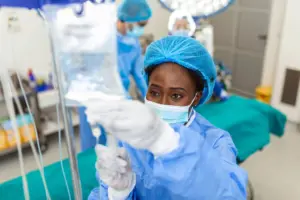
Osteoporosis treatment: Scientists have identified a cell-surface receptor that appears to act as a switch for building stronger bones, opening a potential path to new therapies for osteoporosis.
The receptor GPR133, also called ADGRD1, was found to increase the activity of osteoblasts, the cells that build bone, when activated in mice, according to a study by researchers from the University of Leipzig and Shandong University published in Signal Transduction and Targeted Therapy.
Also Read | Musculoskeletal disorders surge with ageing; middle-income nations bear brunt
GPR133 first came under scrutiny because genetic variants in its gene had been linked to bone mineral density in human studies. To test its role, the team engineered mice lacking the receptor and compared them with mice in which GPR133 could be switched on using a small molecule, AP503. Animals without the receptor developed weaker bones reminiscent of early osteoporosis. When AP503 activated GPR133, bone formation and strength increased, including in mice with established bone loss.
“Using AP503, recently identified through a computer-assisted screen, we were able to significantly increase bone strength in both healthy and osteoporotic mice,” said biochemist Ines Liebscher of the University of Leipzig. The effect was amplified when activation of the receptor was combined with exercise, suggesting lifestyle and drug approaches could work in tandem.
While the results are from an animal model, the underlying biology is likely conserved. “If this receptor is impaired by genetic changes, mice show signs of loss of bone density at an early age, similar to osteoporosis in humans,” Liebscher noted. Co-author Juliane Lehmann said the findings underscore GPR133’s clinical potential in an ageing population.
Osteoporosis affects millions worldwide, and current medications can slow, but not reverse, bone loss and may lose effectiveness or carry notable side effects. By directly stimulating osteoblasts, a GPR133-targeted therapy could, in theory, rebuild bone as well as preserve it, including in women around menopause who face accelerated bone loss.








